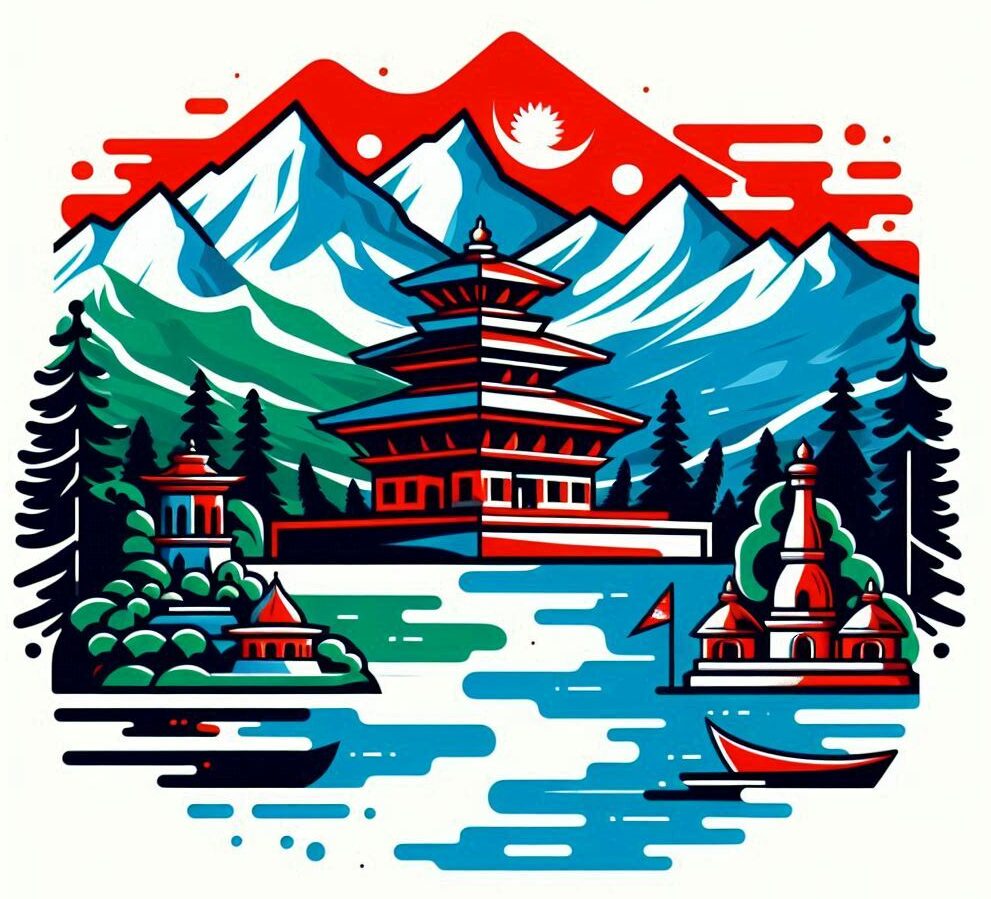Food plays a very important part in Nepalese life. A typical way to greet one other in Nepalese is saying Khana khanubayo, meaning “Have you eaten already”? Nepalese food habits traditionally focus around vegetarian dishes with meat only consumed occasionally, particularly at festival time. Depending on caste and tribal background, Nepalese are vegetarian or consume goat meat, chicken, fish, water buffalo or pork.
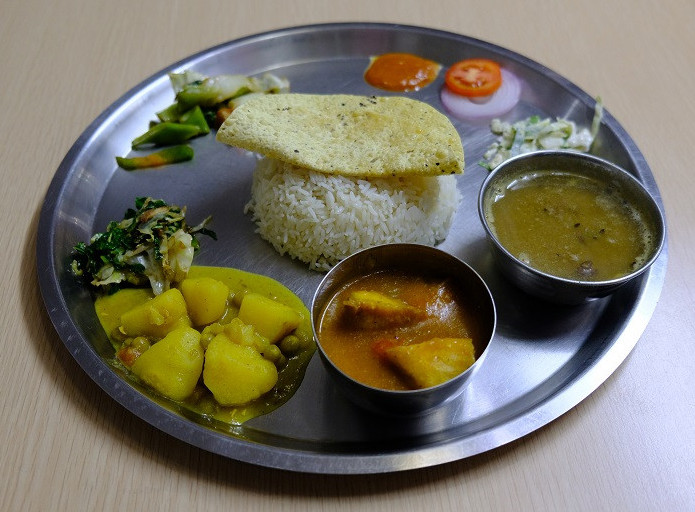 Over time, and with many Nepalese traveling abroad, food consumption patters have changed with international food influences from all over the world having entered the Nepalese kitchen. Nevertheless, the traditional Dal Bhat (rice with pulses) is still the main staple in many Nepali homes, and typically served on a steel plate. The Nepal Cookbook includes an extensive overview of recipes, representing the best of the authentic Nepali cuisine. You will find recipes of festival dishes as well as everyday favorites.
Over time, and with many Nepalese traveling abroad, food consumption patters have changed with international food influences from all over the world having entered the Nepalese kitchen. Nevertheless, the traditional Dal Bhat (rice with pulses) is still the main staple in many Nepali homes, and typically served on a steel plate. The Nepal Cookbook includes an extensive overview of recipes, representing the best of the authentic Nepali cuisine. You will find recipes of festival dishes as well as everyday favorites.
Breakfast; just try a new start of the day
Traditionally, Nepalese eat two main meals daily, with rice or roti. The first meal is taken late in the morning. Earlier in the morning at breakfast time Nepalese typically have tea with some small snack or bread in urban areas. Food patterns are changing with families in urban areas adopting a more western style for breakfast.
Khir (rice/milk pudding) is eaten as a sweet breakfast or as a snack. Khir is also an important festival food, and is used at baby rice-feeding, called Pasni, the first time babies eat solid food.
Puri (a deep-fat fried bread made from wheat flour) is eaten for breakfast or as a snack, served with a curry of a mixture of vegetables, peas and potatoes. It is a good change to try for breakfast, particularly to start the day in winter time.
Lunch and dinner; try the traditional Dal Bhat
Dal Bhat, rice with pulses, is the staple food many Nepalese families eat for lunch and dinner. It is often served with vegetables (tarkari) and some pickle (achar). It is mostly taken as a vegetarian dish, with meat only added occasionally in the weekends or at festivals. Many families have rice for lunch and change it at times with roti for dinner.
Dal Bhat is cooked fresh for every meal. All ingredients are cooked very well which makes it a safe dish to eat when you are traveling.
Festival food and snacks; some of them you will like
The first snack to look at in Nepal are Momos, this is a have to try during your visit. It are dumplings with different types of stuffing on a vegetarian non-vegetarian basis. Momos can be steamed or fried.
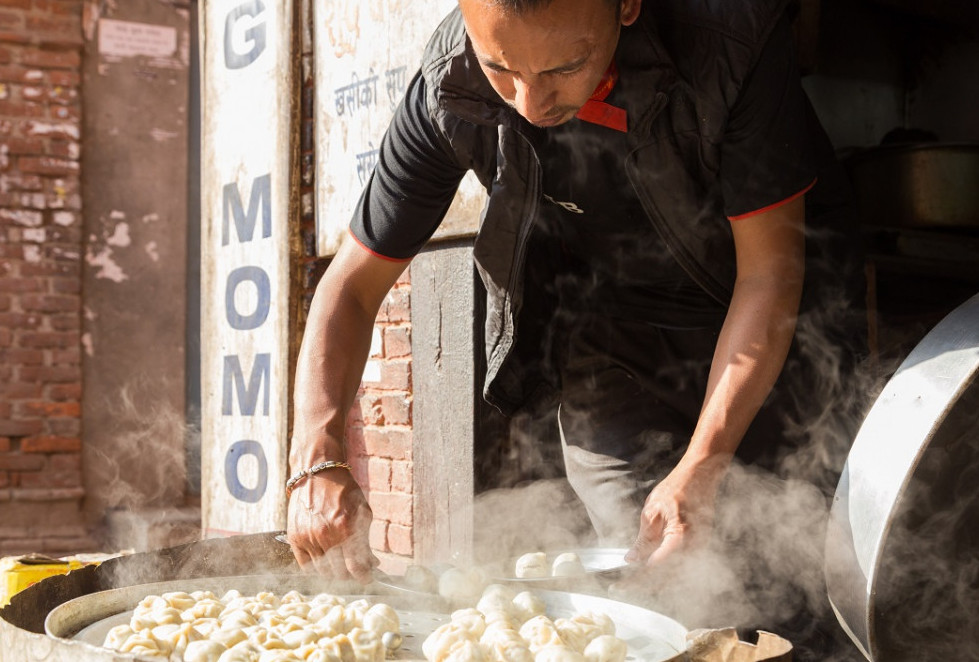
Chiura, or “bitten rice” is a popular traditional food of Nepal made of paddy. It is particularly popular with the Newar community and often eaten in combination with Dahi (Yogurt).
Yomari is made by kneading rice flour in a fig shape and fill it with Chaku (sweet mix with black sesame)
Sel Roti is cooked for most festivals, but particularly during the Tihar festival, which marks the victory of good over evil. and is popular with almost all ethnic groups. It is one of my favorites when I’m on the road and like to have a quick snack at a teashop. 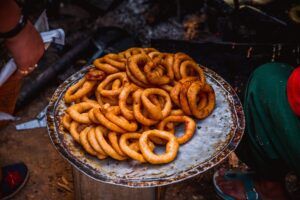
Jeri (Jilebi) is another (sweet) snack, on flour, curd and saffron basis that is very popular in the country and available in many Nepalese homes during festivals and at teashops. It is also nice to eat in combination with yoghurt (dahi).
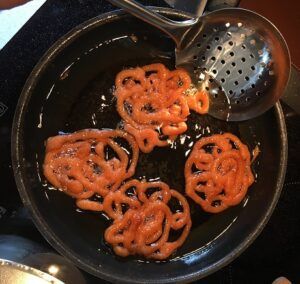
Malpuwa is usually eaten as a snack and at festivals and pujas (worships). Iyt can best be described as fritters or pancakes, served as a dessert or a snack
Maasko bara is another popular snack food used at many religious ceremonies and festivals. It is made on a basis of black lentils.
Chana is a snack of roasted chickpeas and popular throughout the country.
Bhatmas Sandeko is a soya bean salad made by mixing garlic and ginger with soybean. It is commonly eaten with cheura as a side dish to the main meal or as a snack. Another popular snack is roasted dry soybeans.
Food habits and cultural practices you need to know
Nepalese traditionally eat by hand. They use their right hand for this, as the left hand is considered “contaminated” as it is used for cleansing purpose while going to the toilet. Food should therefore be handled with your right hand, while you eat or when you pass it on to someone.
When you have touched your fingers to your mouth, you are not supposed to touch food at a common plate or passing it on to someone else anymore. This is also considered to be “contaminated” . So, if something touches your mouth, it is instantly jhuto and can no longer be consumed by anyone else. Also, after your hand has touched your mouth when eating, that hand and your food are now contaminated.
Enjoying the Nepalese traditional food experience
If you like to enjoy a typical Nepali food experience, try to find a Thakali restaurant. Thakali people are an ethnic group from the Mustang area. They are well-know in Nepal for their cuisine and food hygiene. They typically serve a Dal Bhat (rice with pulses) served with vegetables and meat if you like.
The indigenous ethnic group of the Kathmandu valley, the Newaris, are well-known in Nepal for their kitchen. here you can also have the Dal Bhat dish, and several authentic and exotic dishes.
If you like to combine a culinary experience with a cultural exposure, then a visit to such restaurants that cater for this combination enjoying good food, traditional dances and music is for you. Nepali Chulo at Lazimpath in Kathmandu is one of the restaurants in a traditional old Rana palace that offers such possibility.
